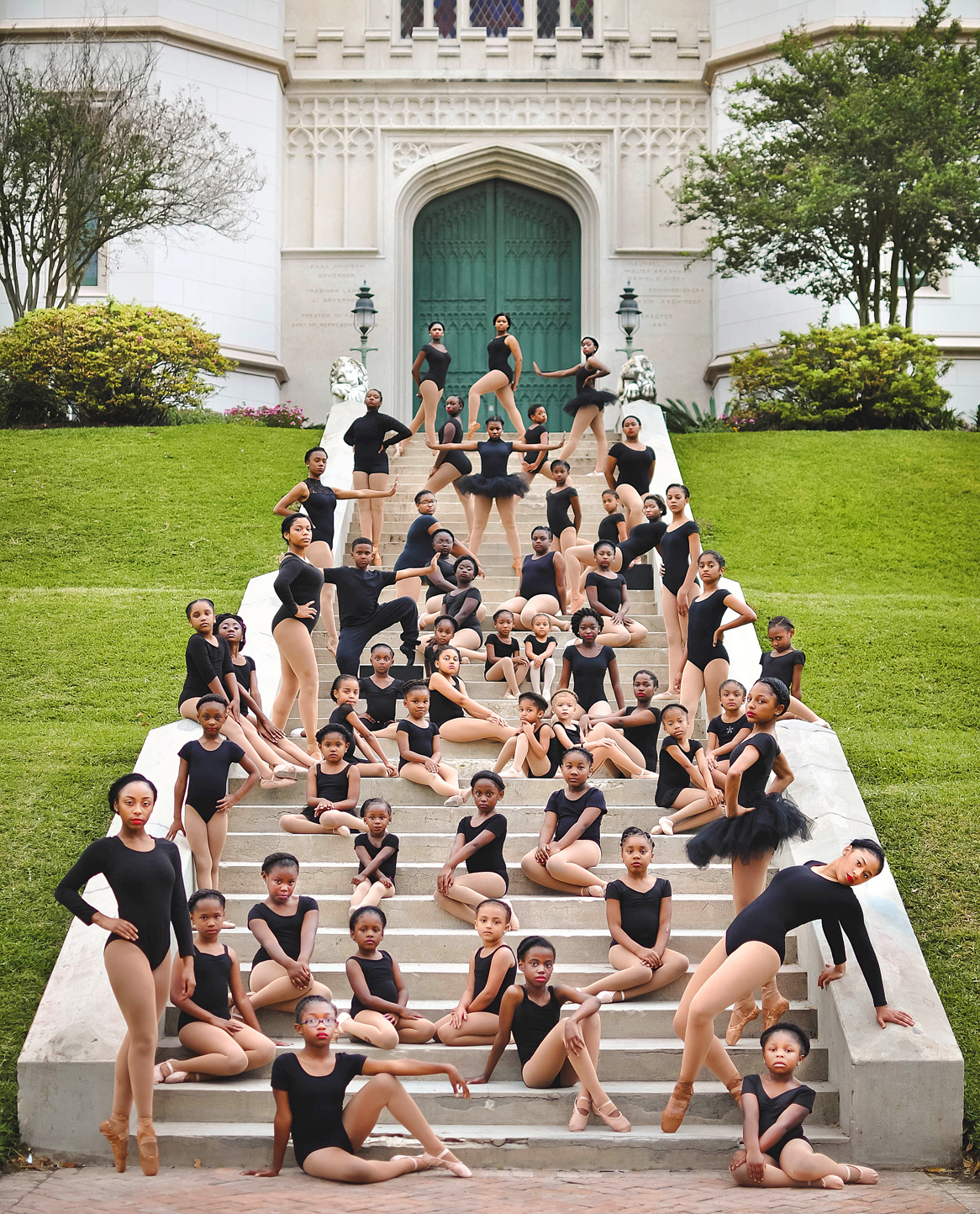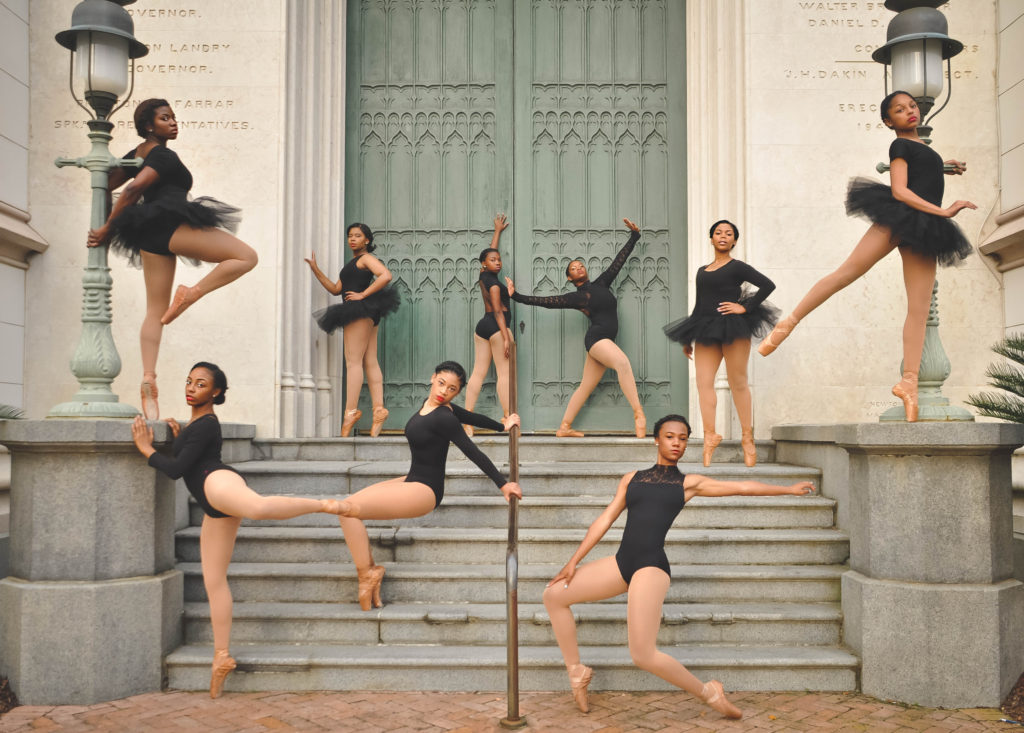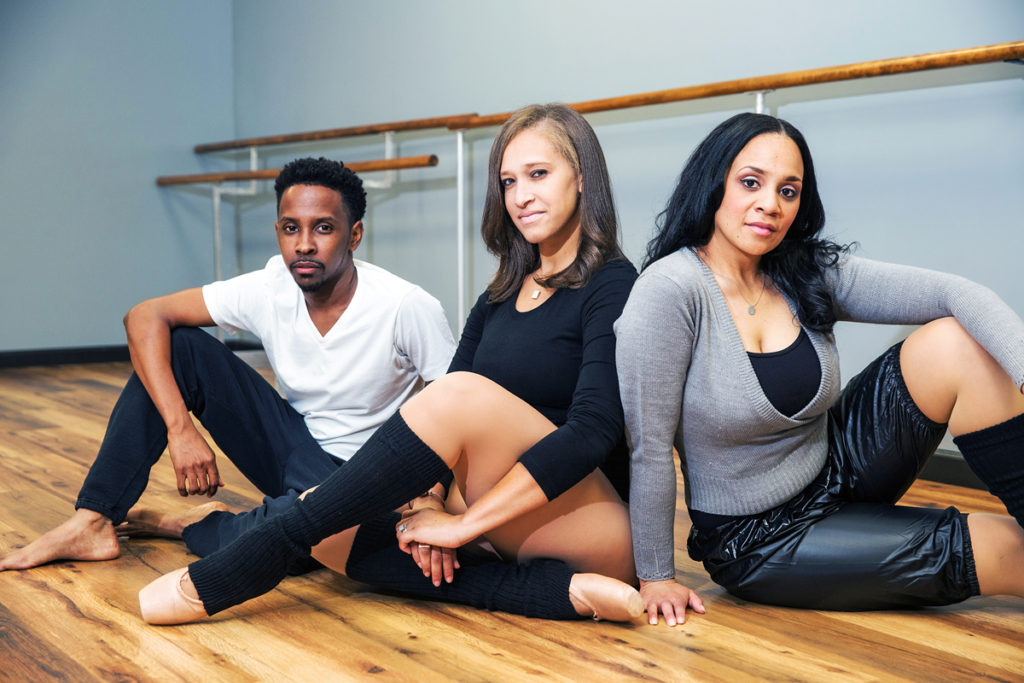
How En Pointe Dance Studio—and their viral photo—is breaking new ground
The image has been shared across the internet, racking up love from all over the world. It shows a group of predominately African-American ballerinas posed dramatically on the steps of the Old State Capitol, poised, powerful and en pointe.
For Brandi Chapman, who founded En Pointe Dance Studio in 2013, the worldwide response since the picture first hit their Instagram account in April is still surreal. Classes are packed to capacity now, and En Pointe’s Facebook page has skyrocketed from 200 to 25,000 likes. All eyes are on Chapman and company. It’s all good, though—they live for the challenge.
“It reassured what we were doing, and it kind of set a fire under us,” 27-year-old En Pointe instructor Jeoffery Harris says of the viral photo. “It made us think, ‘How can we outdo this?’ That’s our biggest thing—how can we we outdo ourselves?”
|
|
“It set the bar,” 35-year-old instructor Shanna Fisher adds. “Our bar has always been high, but nobody else could see that. And now it’s like, lights, focus, on us. … So how do we make it better?”
These three dancers, with fellow instructor Shelley Harrison, have a few answers. The new season beginning this month brings more students, more traveling outside of the studio and more guest artists and instructors into the studio to immerse students in different techniques and styles. On top of it all, this summer the team enjoyed a euphoric meeting with Misty Copeland, the first black ballerina promoted to principal dancer for the prestigious American Ballet Theatre.

Not unlike Copeland, En Pointe’s viral photo has broken ground with its portrayal of a majority black ballet company, a rare occurrence in ballet even in 2016. But if you ask Chapman, she’ll tell you that the company isn’t branded as a black company and isn’t exclusive—it’s simply inclusive of all races. The question, perhaps, is why more studios don’t look like this one.
“That’s something that’s really important—‘I can relate to the person that’s teaching me that looks like me,’” Chapman says. “From the time I started to the time I graduated [from LSU], there were two of us, two African-American dancers in the entire studio.”
“It just opens up a different world of dance for us,” Fisher adds.
With Harris on board, there’s even someone to whom male students can relate.

Feeling comfortable with their instructors creates confidence and comfort between the students, and the dancers at En Pointe have become a family of their own. Many come from blue-collar parents who must work overtime to pay for dance classes, and like many teens searching for a place to belong, some prefer their creative outlet to their home lives. At the studio, they’re free from financial stress or any other constraints to be who they are, express what they feel and be built up by mentors and peers.
“I think for a lot of our older girls, it is just starting to click to them that this is their release,” Chapman says. “This is home away from home. We have to literally kick them out of the studio when they’re in here, whether it’s for a meeting, for class, for an activity—it’s almost like they don’t want to go, because dance has become their second home.”
A flawless sequence or a smoothly-run recital will always make Chapman and her team proud. But their best and most rewarding moments are outside of class, when a student comes in dressed professionally in a leotard and slippers, when they sit together laughing and talking after rehearsal or when a mother thanks them for the difference En Pointe has made for her child.
“[It’s] the teaching moments, the coaching moments, the mentoring that we do,” Fisher says. “For the kids, it’s dance. For us, it’s passion. It’s genuine passion for the art of movement. When you’re able to take something like that and touch lives, it’s much deeper.”
|
|
|
